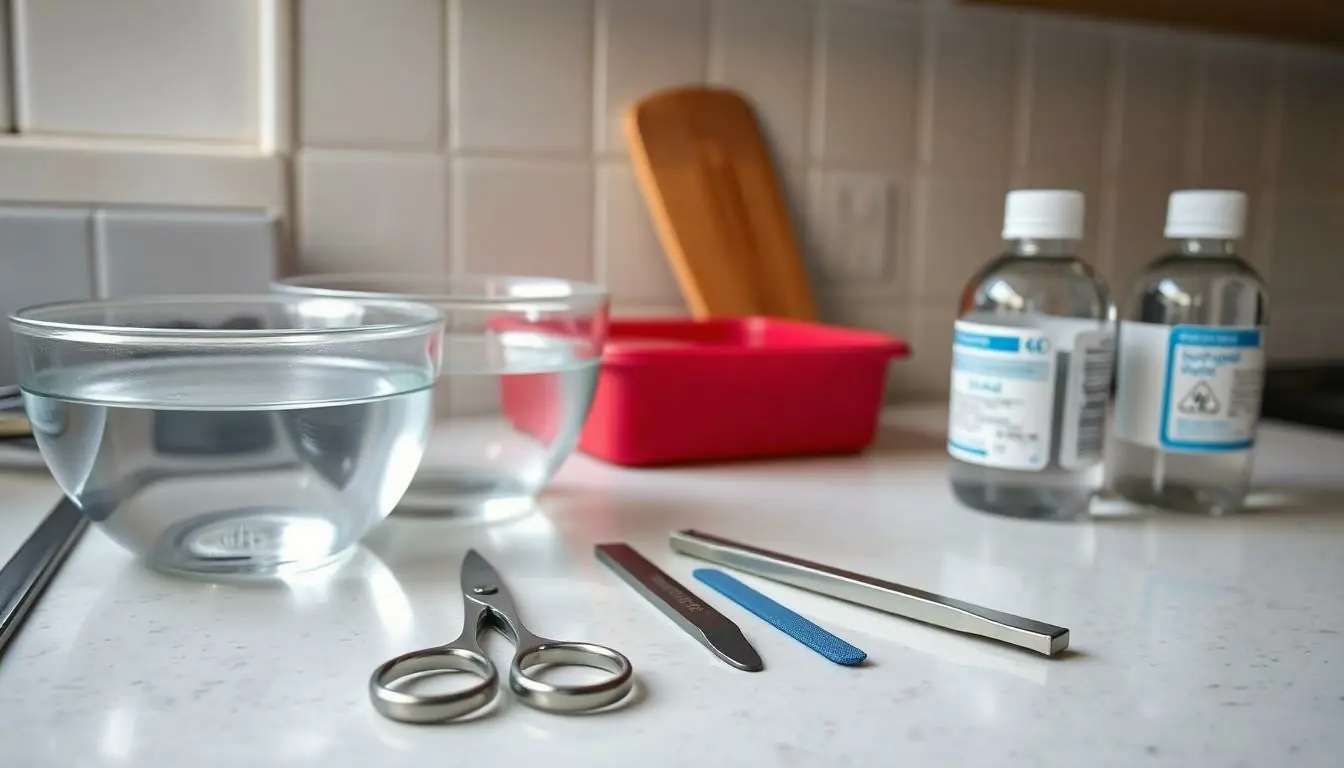Keeping nail tools clean isn’t just a good idea; it’s a necessity. After all, nobody wants to turn a simple manicure into a science experiment gone wrong. Imagine pulling out your nail clippers only to find they’ve been hosting a mini bacteria party. Yikes!
Table of Contents
ToggleImportance Of Sterilizing Nail Tools
Sterilizing nail tools prevents the spread of infections and disease. Contaminated tools can transmit bacteria, fungi, and viruses. Regular cleaning of clippers, scissors, and other implements proves essential for maintaining nail health.
Bacteria thrive in moist environments, making nail clippers an ideal breeding ground. Using dirty tools can lead to conditions such as paronychia, a painful infection around the nail. Inadequate sterilization increases the risk of transmitting bloodborne pathogens, including hepatitis and HIV.
Experts recommend using proper sterilization methods to ensure tools remain safe. Submerging tools in isopropyl alcohol for a minimum of 10 minutes kills most pathogens. Autoclaving tools offers another effective sterilization method, utilizing high-pressure steam to eliminate contaminants.
Nail salons uphold strict sanitization standards to safeguard clients. Home users should adopt these practices for personal hygiene and safety. Many tools, like files and buffers, require specific care, as their surfaces can trap bacteria.
Implementing regular sterilization routines fosters confidence in personal nail care. Those who maintain clean tools minimize the risk of complications and maintain healthy nails. Ultimately, proper sterilization is critical for anyone who uses nail tools frequently.
Methods To Sterilize Nail Tools At Home

Sterilizing nail tools at home protects against infections. Multiple methods ensure thorough cleansing.
Using Boiling Water
Boiling water serves as an effective sterilization method. Fill a pot with water and bring it to a rolling boil. Submerge the nail tools in the boiling water for five to ten minutes. This temperature effectively kills most bacteria and viruses. After boiling, remove the tools using tongs and allow them to cool completely on a clean towel. Proper drying is essential to prevent moisture that can harbor further bacteria.
Using Alcohol
Isopropyl alcohol works well for sterilizing nail tools. A solution with at least 70% alcohol concentration is ideal. Pour the alcohol into a container and fully submerge the tools for about 10 minutes. After soaking, remove the tools and let them air dry completely. Alcohol evaporates quickly, reducing the risk of moisture lingering on the tools. For best results, store sterilized tools in a clean, dry case.
Using Bleach Solution
Bleach solution offers another effective method for disinfection. Create a diluted solution by mixing one part household bleach with ten parts water. Soak the nail tools in this mixture for five to ten minutes. After removing them, rinse thoroughly under running water to eliminate bleach residue, which can be irritating. Air drying your tools prevents additional bacterial growth and ensures they’re ready for the next use.
Best Practices For Nail Tool Care
Maintaining nail tools through proper care practices fosters hygiene and enhances longevity.
Regular Cleaning
Cleaning nail tools after each use prevents the buildup of bacteria and debris. Use warm, soapy water for initial cleaning, ensuring each tool is thoroughly scrubbed. Rinse them well to remove soap residues, which can also harbor germs. After cleaning, soak tools in a sterilizing solution for the recommended duration based on the method. For example, isopropyl alcohol requires about ten minutes of soaking at a concentration of 70% or higher. Air drying effectively removes remaining moisture, minimizing the risk of bacteria growth. Regular maintenance protects users from infections while ensuring tools remain in good condition.
Storage Tips
Storing nail tools properly prolongs their usability and maintains a clean environment. Use a dedicated pouch or container to keep tools separate from other items. Ensure the storage area is dry to prevent moisture, which allows bacteria to thrive. Consider using protective covers for blade edges to maintain sharpness and reduce damage. Storing tools in a cool, dry place reduces the risk of rust and degradation. Organizing tools thoughtfully helps prevent accidental contamination or breakage. Prioritizing these storage tips complements regular cleaning efforts, creating an optimal nail care routine.
Common Mistakes To Avoid
Neglecting to clean nail tools after each use poses a significant health risk. Bacteria can easily accumulate on clippers and scissors if not properly sanitized. Using inadequate sterilization solutions, such as diluted household cleaners, fails to eliminate harmful microorganisms. Choosing not to soak tools long enough impairs the effectiveness of the sterilization process.
Overlooking storage methods can lead to contamination. Storing tools in damp areas encourages bacterial growth. Failing to dry tools thoroughly after cleaning leaves moisture, which is ideal for pathogens. Utilizing non-sterile surfaces, like bathroom counters, can introduce more germs.
Relying solely on one sterilization method limits effectiveness. Combining boiling water with isopropyl alcohol enhances safety. Ignoring the manufacturer’s guidelines for specific tools may lead to damage or inadequate sterilization. Risking contact with contaminated tools during the sterilization process diminishes the effort put into hygiene.
Misjudging the importance of regular maintenance undermines safety. Scheduling a routine cleaning and sterilization ensures tools remain in optimal condition. Avoiding these common mistakes leads to healthier nails and minimizes the risk of infections. Following best practices consistently promotes personal hygiene and overall well-being in nail care routines.
Maintaining clean and sterilized nail tools is essential for personal hygiene and health. By adopting effective sterilization methods like boiling water or isopropyl alcohol, individuals can significantly reduce the risk of infections and ensure their nail care routine is safe. Regular cleaning and proper storage further enhance the longevity of tools while promoting a clean environment.
Avoiding common mistakes in nail tool care can make a substantial difference in preventing harmful bacteria from thriving. With these practices in place, anyone can enjoy beautiful nails while prioritizing their health and well-being. Embracing a consistent sterilization routine will foster confidence in nail care and contribute to overall nail health.





